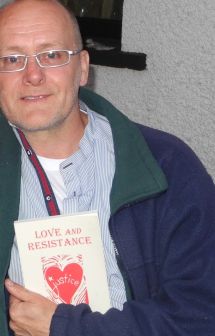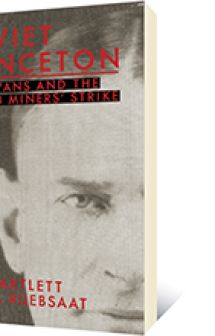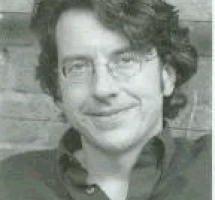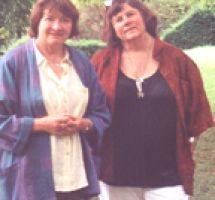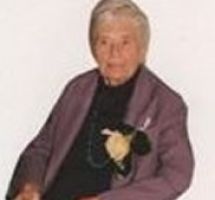“I think there was a concern that the American people, given the facts, would not make the right risk—benefit judgements.” Peter Libassi, Chair, Interagency Task Force on the Health Effects of Ionizing Radiation.
“If your mountain is not in the right place, drop us a card.” Edward Teller
“I´m pretty sure you don´t like to see your home blasted by some other people who don´t live in your place like we live in Point Hope.” Kitty Kinneeveauk
Tikigaq, home of the Inupiat people is a finger of land in the Chukchi Sea, north of the Arctic Circle in Alaska. It is place of great antiquity, continuous habitation for millennia, a polar Machu Picchu and may predate the pyramids. This place roots the whale hunting Tikiramiut in a feeling “of belonging inalienably where they are” as they practice in modern times their traditional hunting combined with available technology and English literacy — vital to their struggle for survival against the dreams of “the firecracker boys” as the Tikiramiut of the nearest, community, Point Hope, called the atomic scientists who wanted to use their homeland as a testing ground for “weapons for peace.”
Even before the destruction of Hiroshima and Nagasaki, atomic scientists were dreaming of an atomic future where the friendly atom would do much of the drudgery of humanity and would create a “promise of Utopia” in an “atomic garden of Eden.“ By 1942 it was not utopia but the bomb that occupied the minds of scientists as the USA raced to develop the bomb and use it before Germany. An enormous, secret and expensive infrastructure was created across the USA which exploded Trinity, the first atomic bomb, in Nevada in July, 1945, unleashing not only massive power and radiation, but fear, awe and excitement in its creators. Though Germany had not built this bomb and Japan was on the verge of surrender the military said, “…if we have such a weapon we are going to use it.”
Three weeks after the Trinity test, bombs were dropped on Japan, the immediate deaths and the continuing deaths from these now, relatively small bombs, were appalling. Five years later, half a million were dead in what President Harry Truman called “the greatest achievement of organized science in the world.”
This is an amazing and extremely important book — amazing in its wealth of connected detail and history, excellent writing and vivid personal stories and 50 years later, highly relevant. O´Neill even makes nuclear physics understandable to the non—scientific reader. He also makes it clear, that the end of the war and the horror of August, 1945, did nothing to deter those hell—bent on continuing nuclear bomb research; the cold war just provided a handy excuse. Every page has an important quote — this review could be almost as long as the book. But this book is vital reading and reference for any group and anyone concerned about history, racism, contemporary nuclear weapons, Disarmament and Test Ban Treaties, ´Cold War´ politics and nuclear energy. Most important, perhaps, how a small group of people worked together, shared information and committed themselves to a cause with overwhelmingly odds and won; they created models that peace and environment activists have been following ever since.
As the book unfolds we learn about the life and motivation of the real anti—hero or, some would say, villain of the time, Edward Teller, the father of the H—bomb, and the development of a powerful cabal of scientists who seemed to be willing to do or say anything to further their primary cause after bizarre failures like nuclear powered airplanes, cars and other attempts to make nuclear a household commodity. Then came Teller´s idea of the ´peaceful´ bomb´, mooted to create an alternative Suez Canal during 1956 when the canal was closed — by exploding enough bombs from the Mediterranean through Israel to the Gulf of Aqaba to “excavate an enormous ditch.” Beyond that he had all kinds of other“landscaping” projects in mind for Earth — like a new canal in Central America — as well as nuking the moon. But the scientists noted “there is some kind of a public relations problem here,” as “all kinds of phobic public reactions have been built about nuclear bombs.”
Project Plowshare, a perversion of a biblical quote, was name given in 1957 to the program to investigate nonmilitary uses of nuclear explosions to use not only for nonmilitary purposes but in Lewis Strauss´ words, to “highlight the peaceful applications of nuclear explosive devices and thereby create a climate of world opinion that is more favourable to weapons development and tests.” Strauss, then Chairman of the U.S. Atomic Energy Commission (AEC) is the infamous author of the now infamous declaration, “It is not too much to expect that our children will enjoy in their homes electric energy too cheap to meter.” Teller became the project director in Livermore, California; he called it ´Geographic engineering´ and said, “We will change the earth´s surface to suit us.”
A national test site was decided on before trying to convince other nations to accept nuclear engineering and where better than remote and thinly populated Alaska? The Livermore scientists consulted an expert in Alaskan geology about the best place to blast out a harbour. Dr. Hopkins was leery of military—oriented science; he had been involved in a project that used geology to find out the effect of nuclear attack on Moscow & Leningrad and later regarded his part in that project as “one of the greatest sins of my life.” Some years later that project continued elsewhere in the USA and I was a lowly geologic researcher on it. But then Hopkins thought a harbour scheme had some “constructive value”. The possible site was narrowed down to 31 miles SE of Point Hope, near the Ogotoruk Creek entry into the Chukchi Sea. Soon a survey camp established by the creek was spotted by Daniel Lisbourne, president of the Port Hope Village Council. This field crew were the advance party of the scientists that Lisbourne and his Eskimo community were to call, “the firecracker boys”.
Those boys lead by Teller then launched a well—funded leave—no—stone—unturned public relations campaign in Alaska on government, academia, media, business and citizens. With promises of economic benefits and lavish spending to compensate for the decrease in wartime & military spending, Teller and his “Project Chariot” intended to create a crater with thermonuclear bombs that would make a great deep sea harbour. Even though some of these groups posed difficult questions and objections to the proposal, Teller had reassurances, promises and answers for just about everyone — except the people who would be most affected whom they finally got around to visiting — the Eskimo citizens of Point Hope. “Charming and persuasive”, Teller bustled around Alaska, always changing figures and projections — flexible and responsive to any doubters. “Charming and lying”, might be a more accurate description; he insisted, to biological scientists that, “radiation hazard was a nonissue.” O´Neill has done a meticulously documented report of this campaign — he used not only press & print archives, but has interviewed dozens of people exposed to the fallout of this PR campaign.
This was all at a time when people the world over, including in Point Hope, had read and learned about the effects of bombs dropped in Japan and the results of ongoing tests in the South Pacific. In Canada in 1959 groups were coalescing around the initiative of Mary van Stolk in Edmonton, forming branches of “The Canadian Committee for the Control of Radiation Hazards.” I was a founding member of this group in Regina Saskatchewan; we were concerned with the levels of fallout blowing north into Canada from Nevada bomb test sites. Even the Saskatchewan government was willing to measure and monitor fallout; the dangers of radioactive strontium and caesium, particularly to children were well known. This group later became the Campaign for Nuclear Disarmament, following the lead of the UK campaign — knowing that radiation without disarmament and an end to testing nuclear weapons could never be controlled. The Canadian Voice of Women launched a brilliant campaign of collecting baby teeth from Canadian parents in order to analyze the absorption of radioactive elements. At the time my co—activists and I were desperately trying to stop a life—threatening juggernaut; now, in perspective I see that the peace movement of the time, in Canada and elsewhere, was actually also an environmental movement, long before Save the Whales or old—growth forests movements. Yet today, few environmentalists are aware, interested or involved in activism on the connected issues of militarism and environment.
It was soon documented in Canada and the USA, that caribou, the main food source for many indigenous northern people had amazingly high levels of radioactivity — their food source was lichen which absorbs its food from the atmosphere and thus concentrated radioactivity in caribou. Thirty years later, thousands of highly contaminated reindeer (caribou´s European relatives) were destroyed in northern Europe after the Chernobyl disaster.
All these things that were known to citizen groups were also known to the Livermore scientists but they did their best to brush radiation hazards under the rug or as they promised — out to sea towards nearby Russia. Teller and his boys had other hidden agendas. They really did not care about the economic feasibility to Alaska anymore than they cared about fallout; later release of documents reveal that Teller really wanted a model for a new Panama Canal and to promote its value for military development of the bomb use. As the AEC manager said, “the circumstances created by an integration of work performed to produce explosive nuclear devices, whether for peaceful application or for weapons, makes it impractical to separate this function.” After these uses of the bomb were finally discredited, the use of nuclear energy has continued to today to be inseparable from military functions. Now nuclear power is being mooted as the clean response to global warming and simultaneously, there is an upsurge in nuclear weapons production, mainly in USA and other major nuclear nations.
By 1958, even as Teller worked his powers on government and academia, people were questioning the value of a blast planned to be “1600 times larger than Hiroshima.” Scientists within the USA establishment were concerned about nuclear tests and Eisenhower, always a reluctant nuclear warrior, agreed to negotiate a test ban treaty with USSR after Khrushchev took the initiative; but Teller and his boys kept up the pressure for ´peaceful´ tests.
Meanwhile the Teller´s boys were touring the Arctic trying to sell Project Chariot without the promised economic benefits but purely for research purposes. At a meeting in Fairbanks, biology faculty at the University of Alaska were not impressed by the physicists who, with no data or background expertise in radiobiology, were giving categorical assurances that there would be little environmental damage and even claimed the project would yield valuable bioenvironmental information. But they had no background studies for reference even the gung—ho University President had proposed some baseline work was needed. But the biologists did not think that Chariot should do its own research as one fisheries instructor cited the “AEC´s well-known reputation of ´mendacity.” That prompted a break while the visiting physicists looked up the meaning of that word and “they were furious.” The biologists went public with their objections as did citizens like Ginny Wood, a retired bush pilot. She called the proposal “a pig in a poke” and shredded the AEC´s assurances, but local commerce and media were still boosting Chariot as a boon to the north; “located in the wilderness, far away from human habitation.”
“…the village of Point Hope was only 31 miles from ground zero”…and seasonally occupied.,. ground zero itself — to collect the eggs of cliff—nesting birds.”
But Chariot survived and contracts for ´health and safety studies´ were promised as politicians in Alaska and Washington were embroiled in struggles with AEC and Livermore — Teller´s own empire. An AEC biologist, John Wolfe, who appreciated the north and its people, was appointed to oversee the study. After visiting the Arctic, he said, “Not infrequently it is described as remote, barren and climatically rigorous….It is not remote to the Eskimo, the Arctic fox, the ptarmigan, the flowering plants blooming by the thousands…and the arctic climate is most salubrious to indigenous dwellers among which are some of the most majestic animals of the earth, not excluding man.”
He hired University of Alaska biologists to work on the project, they saw it as an opportunity to do fieldwork, but also suspected, “that we were the tame biologists they had bought.” In 1959, that institution bestowed an honorary PhD. on Teller. The ´tame biologists´ turned out to be strong opponents of Chariot and supporters of the Eskimo people who opposed the project and scientists were increasingly disturbed at the manipulation and misrepresentation of data.
Plans and surveys continued without any communication to the residents of Point Hope, the supportive scientists were aghast. The community of Point Hope, closest to the proposed blast site was not on the list of visited places. Still living in a traditional way, the Eskimos were literate in English, politically sophisticated, skilled communicators and were well-informed and aware of world events. They knew much about the results of Japan & South Pacific bombing. They loved their land and all the lived on it and in the sea around. They sent a unanimously approved petition to the AEC. “We, the undersigned the Point Hope Village Council do not want to see the explosion at the near area of our village Point Hope for any reason and at any time.”
The local media, fed by the AEC, was claiming that “these natives living largely a primitive life would not be disturbed…or suffer future ill effects”. In March 1960 the AEC finally met the people of Point Hope. The degree of preparation of the locals and their questions and reactions were a surprise to the AEC men who thought they could easily sell Chariot. After much prevarication and outright lying by the AEC boys, “we will protect your interests completely”, enough was enough. Outspoken Kitty Kinneeveauk was knowledgeable and articulate, talked about AEC´s other projects and their disastrous results; she, council leader Daniel Lisbourne and others kept asking embarrassing questions & ended up by reinforcing their petition and accusing other Alaskans as supporters of Chariot because they were profiting from it. Absolutely true. The community of Point Hope got all the mendacity down on tape and remained implacably opposed to Chariot. O´Neill devotes a whole chapter to the data then known about the effects of bombing Japan, and tests in Nevada and Bikini, showing indeed that those in power for AEC were lying from one end of Alaska to the other.
I read this book at the same time I read ´the GIRL in SASKATOON: A Meditation on Friendship, Memory and Murder´ by Sharon Butala. They are vastly different books. Hers is ultimately a meditation on the nature of evil, as expressed in the murder of one of her school colleagues. ´The Firecracker Boys´ is also a meditation on the nature of evil; the evil of men with the power of knowledge and money who abuse both for their own ambitions with little feeling for the immense destruction they did and could unleash.
O´Neill leads us through the labyrinths of evil, but he also documents how concerned scientists, citizens and workers throughout the USA and the world were also capable of good; how many people of integrity sacrificed jobs, status and energy to organize and to educate others about the evil of war and war preparation that might and still could destroy the world. Remember this was the Cold War period and undercover agents were everywhere, even in Alaska; intimidation was real and dangerous for many. Citizen groups were alerted to the violation of law and the unauthorized use of Native Land and worked with the Eskimos. Groups concerned with the dangers of radiation were in contact exchanging and distributing information, using the slow and awkward ´Gestetner´ machine to copy in those pre— internet and photocopying days. More lies were revealed and doubts were spreading about the ´peaceful bomb´by conservation societies whose members clearly understood the effects of thermonuclear explosions. The contract scientists in the field were in a major ethical quandary as their findings were ignored or misrepresented. Those who were on contract from the University of Alaska were fired from there by its pro—AEC president. Churches got involved — on both sides. Still the opposition to Chariot grew, forming the early peace—environment alliance that happened in Canada at the same time. By 1961, “…the ripple was widening. It was becoming, in fact, a wave.”
I felt as I read through the description of the ´wave´ that I was in a much neglected meditation on good. It is not easy; today we see the same abuses of knowledge and power on greater, even more destructive levels, the horror of the widespread use of ´Depleted Uranium´ containing weapons on innocent people in Iraq, the former Yugoslavia, Afghanistan and where else? All this serves as an example of the evil we confront now, as innocent people — some whom I have know — die from the effects of DU. Weapons with DU emit radioactivity just as other forms of Uranium do, but without a nuclear bomb, just impact and dissemination can spreads the deadly isotopes. Enormous and obscene military spending, the use of DU, continuous war on earth and soon in space and the revival of building nuclear weapons are being rebuilt in many forms around the world — but mainly in the USA — are all part of our daily confrontation with evil.
Back to “Spiking the Wheels of Chariot” and the final chapters of this true life thriller. By 1961, more Alaskans were questioning the wisdom of a nuclear harbour and in the USA main stream media were also running articles that expressed doubts about the blast. Support groups were springing up across the USA. New political officials in the federal government were concerned about native land rights and the effects on Eskimos and their environment of the Chariot project. The meteorology of the blast time, the geologic effects on rocks and permafrost and more public information about the biological effects were raising major
qualms about the blast — even its value as research data for ´peaceful bombs´elsewhere like Panama were in doubt. In 1962 the AEC commissioners were concerned about “intervening political events” like a Test Ban Treaty.
The Sedan Bomb, exploded in Nevada on July 6, 1962, was the answer and face saver. “…the largest explosion to have occurred on North America up to that point was substantially dirtier” than the claim that 95% of its radioactivity was contained; not so, it spread across the USA in immediate clouds and crossed the Canadian border. But the AEC could then claim that they did not need the Chariot blast in Alaska, it got the data they sought from Sedan. But in reality the AEC had “internal analyses that recognized the political and public relations influence of certain “small but very vocal groups.”
“And something larger than Project Chariot had been knocked off course. Bogged down also was Edward Teller´s headlong rush to establish Plowshare as a highly visible affirmation of the value of fission. Indeed, the civilian application of nuclear energy — other than for electric power generation — never regained its momentum.”
Scientists who put their intellectual integrity on the line were later refused academic positions in the USA because of AEC interference and one who returned to Alaska to do research, Don Foote, died after a minor car accident in 1969. Another, William Pruitt became a Canadian and is recognized now as “the father of North American boreal ecology.” In 1993 he and his colleague Leslie Viereck were awarded honorary doctorates by the University of Alaska ´in recognition of the very actions for which the men had lost their jobs thirty years earlier.´
In his Epilogue, Afterword and Appendix on Methodology, O´Neill brings us up to date on the many results of the proposed project, response to it and its cancellation, the history of those involved, the current political USA political situation and his avenues and sources during research for this book.
For me, in the end, this story is an affirmation of the rights of citizens to know, to organize and to control their own lives. To never forget that social movements are effective; in day´s world we are needed more than ever. Around the world groups organize, inform and act, often at great danger to themselves, to present an alternative to cynical, violent and greedy political powers that rule us. And to remember always, no matter how futile it appears or how small we think we are, in the words of Rebecca Solnit in HOPE IN THE DARK: Untold Histories, Wild Possibilities: “It´s always too soon to go home. And it´s always too soon to calculate effect.”

 Follow
Follow

